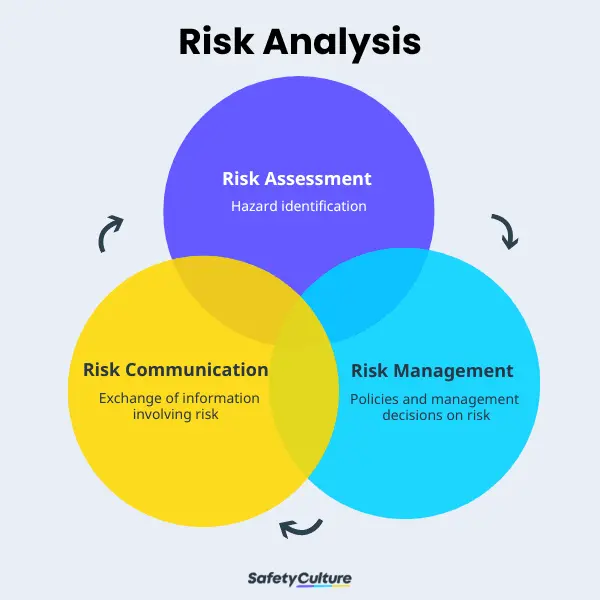Exploring the Enduring Benefits and Importance of Risk Management for Entrepreneurs
Discovering the Value of Risk Management for Effective Decision-Making Methods
In the elaborate world of organization, Risk Management emerges as an essential consider the decision-making procedure. The ability to recognize possible dangers and possibilities, and strategize appropriately, can lead to the distinction between success and failing. With devices such as SWOT and PESTEL, companies are equipped to make educated choices, fostering durability and flexibility in an ever-changing atmosphere. Wondering exactly how this functions? Let's unload the dynamics even more.
Recognizing the Concept of Risk Management
Risk Management, a crucial part in decision-making, is frequently misconstrued or oversimplified. Risk Management includes structured and disciplined approaches, utilizing data and informative evaluations. From economic unpredictabilities, lawful responsibilities, tactical Management mistakes, to crashes and natural catastrophes, it addresses various risks - importance of risk management.
The Function of Risk Management in Decision-Making Processes
In the realm of strategic planning and service procedures, Risk Management plays an essential function in decision-making processes. It assists in identifying prospective threats and uncertainties that can impact the achievement of business purposes. By mapping these threats, firms can develop strategies to mitigate their influence, guaranteeing service connection and stability. Risk Management thus becomes a vital tool in decision-making, assisting leaders to make educated selections based upon a thorough understanding of the threats included. It motivates an aggressive method, making it possible for companies to prepare and expect for feasible future situations. This substantially decreases the possibility of unfavorable repercussions, advertising more effective and reliable decision-making methods. For that reason, Risk Management serves as a crucial part in the decision-making procedures of any type of company.

Just How Risk Management Boosts Strategic Planning
In the context of calculated preparation, Risk Management plays a pivotal function. Initiating with the identification of potential dangers, it additionally reaches the implementation of Risk reduction actions. The function of Risk Management is not fixed however dynamic, as it demands constant tracking and adjusting of strategies.
Determining Potential Risks

Executing Risk Mitigation
Risk reduction approaches can vary from Risk avoidance, Risk transfer, to take the chance of reduction. Each method needs to be customized to the certain Risk, considering its prospective effect and the company's Risk tolerance. Effective Risk mitigation needs a deep understanding of the Risk landscape and the potential influence of each Risk.
Surveillance and Readjusting Methods
Though Risk mitigation is a critical action in strategic planning, constant tracking and adjustment of these techniques is just as crucial. This ongoing process permits organizations to determine new threats and reassess existing ones, guaranteeing the implemented techniques remain reliable in the ever-changing organization environment. It likewise offers a chance to assess the success of the Risk Management steps, enabling modifications to be made where needed, further enhancing strategic planning. Effective monitoring and modification need using analytics and essential performance indications (KPIs) to gauge performance. These tools provide important data-driven insights that can inform calculated decision-making. Consequently, monitoring and changing Risk Management techniques is a crucial part for improving an organization's strength and tactical preparation.
Situation Researches: Effective Risk Management and Decision-Making
In the world of company and financing, effective Risk Management and decision-making typically serve as the columns of prosperous ventures. These cases highlight the value of sharp Risk Management in decision-making procedures. These cases emphasize the vital duty of Risk Management in strategic decision-making.
Tools and Strategies for Reliable Risk Management
Navigating the elaborate labyrinth of Risk Management calls for the ideal collection of tools and techniques. These devices, such as Risk signs up and warmth maps, help in identifying and analyzing potential dangers. Methods consist of both measurable approaches, like sensitivity analysis, and qualitative techniques, such as SWOT evaluation. click These help in prioritizing dangers read this article based upon their possible influence and chance. Risk feedback techniques, a crucial component of Risk Management, entail approving, staying clear of, transferring, or mitigating dangers. Surveillance and controlling dangers, through normal audits and evaluations, ensure that the techniques remain effective. With these methods and devices, decision-makers can browse the facility landscape of Risk Management, therefore facilitating educated and efficient decision-making.
Future Trends in Risk Management and Decision-Making Techniques
As we explore the vast landscape of Risk Management, it comes to be apparent that the devices and techniques made use of today will certainly continue to develop. Future patterns aim in the direction of a raised reliance on modern technology, with expert system and maker knowing playing considerable functions. These technologies will certainly enable organizations to predict prospective risks with greater accuracy and make even more educated decisions. Additionally, there will be a growing emphasis on strength, not just in taking care of dangers yet additionally in getting better from negative circumstances. Last but not least, the idea of Risk culture, where every participant of a company understands and involved in Risk Management, will obtain more prestige. These patterns proclaim an even more positive and comprehensive strategy towards Risk Management and decision-making.
Conclusion

Risk Management thus ends up being a crucial tool in decision-making, assisting leaders to make educated selections based on a thorough understanding of the threats included. Risk mitigation methods can vary from Risk avoidance, Risk transfer, to risk decrease (importance of risk management). Effective Risk reduction calls for a deep understanding of the Risk landscape and the possible impact of each Risk. Risk feedback techniques, a key part of Risk Management, involve approving, avoiding, transferring, or mitigating threats. The principle of Risk culture, where every member of a company is conscious and included in Risk Management, will click over here now gain more importance